Condensate drainage from the outdoor unit of the air conditioner: organization methods and best technological solutions
The split system consists of internal and external parts. The process of the device in cooling mode is accompanied by the release of liquid. Condensation from the outdoor unit is not the most pleasant substance in this design? And his entry into the room is generally extremely undesirable, is not it?
There are no special technical difficulties in the installation of a drainage line to remove moisture. A special condensate collection tube is usually installed together with the outdoor unit of the split system. We will tell you about all the popular options for further arrangement of the drain.
Useful recommendations can come in handy when monitoring contractors. Perhaps you can take advantage of our tips for self-building a system for the removal and disposal of condensate.
The content of the article:
- Where does the unnecessary fluid come from?
- How does the drain happen in practice?
- What is condensate?
- What are the ways to discharge water?
- Installation requirements for drainage pipes
- Sewer drain
- Why do we need a drain into the sewer?
- Causes of drain line malfunction
- Conclusions and useful video on the topic
Where does the unnecessary fluid come from?
Air conditioning in the air conditioner occurs when refrigerant is circulated. An element of the flow pattern in which the temperature drops is called an evaporator.
The device received such a name because moisture droplets appear on its case during operation, that is, “evaporation”. The liquid formed is the very condensate that requires the removal of a split system from the unit.

Draining the accumulated moisture is an important point for the proper operation of the air conditioner. The climate control unit operates from the electric network. As you know, water is a good electrical conductor. At high humidity there is a risk of short circuit in the device circuit.Damage to expensive electrical equipment can be prevented by proper condensate drainage.
How does the drain happen in practice?
A small opinion poll conducted among users of air conditioners showed interesting statistics.
To the question where you drain the condensate, the following answers were received:
- Just outside - 68%;
- By gravity to the sewer - 16%;
- In a special drainage system - 8%;
- What kind of condensate? - 8%.
Explain the essence of fluid discharge for the unenlightened last category of owners split systems. For those who do not know where the condensate formed in the air conditioner goes, it is useful to read the instructions for the device. It gives clear instructions for installing the drain outlet from the air conditioner unit.

Remember about the features of the climate technology that produces the liquid, it should be not only in the design and installation. It is necessary to monitor the process of moisture removal during operation of the air conditioner.
What is condensate?
The risk of harm to health from the improper removal of evaporated moisture is much more dangerous than the threat of a split system breakdown. Although in terms of its chemical composition, condensate is just ordinary water. But the fact is that pathogenic microbes accumulate in stagnant warm moisture.
Consequences of not diverted condensate can be:
- unpleasant musty smell from the air conditioner;
- reproduction of pathogens of Legionella infection;
- the formation of various forms of mold.
It is a mistake to consider air conditioning to be the main cause of the serious "legionnaires' disease." A dangerous microorganism lives in soil, pools, decorative fountains. Wherever there is stagnant water, even in medical physiotherapy equipment, there is a threat of collision with legionella.

The drainage system is designed to drain excess moisture. Properly performed condensate drainage and timely maintenance make the climate equipment completely safe.
What are the ways to discharge water?
The cheapest option is to remove the by-product by gravity. But there are varieties in this fundamental execution. They are located in the place of condensate intake.
The main methods of fluid drainage:
- Simply take the drain pipe to the street and leave it on the wall with dripping condensate. This standard technique is used in most installed split systems.
- Attach a long drain hose to the outlet and collect condensate in a container. In hot weather, you will have to monitor the filling of this drain tank, which is not very convenient.
- Drain pipes can be routed to the nearest sewer or sink. Such a gravity system requires strict adherence to the slope of the highway in the installation
- Install a forced moisture drain to the sewer system using a pump. A pump is used at a considerable distance from the air conditioner to the point of condensate discharge.
Air conditioning is not the cheapest of modern technological advances. Therefore, you should not save on proper design and installing a drain system waste moisture.

In any case, the drainage must be done correctly from the very beginning of the installation of the split system. Whichever option you want to remove condensed moisture.
Installation requirements for drainage pipes
Air conditioning manufacturers do not recommend the use of corrugations for electrical wiring, garden hoses in condensate drain lines.The route of the gravity condensate drainage system should not have bends or sharp turns.
Special smooth and corrugated pipes for condensate drainage possess the necessary strength. They are made of polyethylene, polystyrene, and plastic.
The drainage line parameters are as follows:
- Horizontal sections have a slope of about 3%, at bends the maximum allowable angle is up to 45about;
- The standard inner diameter of the pipes is usually 16 mm; hoses cannot be inserted into each other;
- The tight connection of the hose to the split system unit is ensured by fitting adapters.
At the bottom of the case of the external unit of the air conditioner there is a special hole for attaching a flexible drainage pipe.

For routing the connecting cables and the condensate drain hose between the outside and indoor units split system a hole is made in the wall. It must be done with a bias towards the street. Even with a scheme with forced liquid removal. After all, the pump can fail and for some time the moisture will be removed by gravity.
Sewer drain
The best solution is to drain condensate into the sewer. The problem with this drain is that there is usually no sewer area in air-conditioned living quarters.
What to do if condensate from the climate unit flows into the treated room, will tell next articlewhich we advise you to read.
The solution is one of the following options:
- Laying the drainage pipe in compliance with the slopes to the sewer in another room.
- Installation of a sewer pipe to the room in which the air conditioning unit is installed.
Choose a suitable condensate drainage method. As a rule, the complexity and cost of materials are lower in the first case.
Diagram of the branch line inside the house
The outdoor unit does not produce condensation in cooling mode. Dripping on the heads of passers-by in hot summer, water from the air conditioner is collected in the indoor unit. And then from a special storage bath is removed through the drain pipe.
But it is completely optional to output fluid to the external module of the system. The condensate collected in the room can be sent from the air conditioner to the sewer to the nearest riser indicated in the pipe layout inside the house. The smaller the length of the drainage system section between the indoor split system module and the sewage system, the easier the maintenance and repair of the main will be.

Connecting a condensate drain line to a sewer sewage circuit requires knowledge and experience. If you intend to do such a job yourself, consult with masters with practical experience in this field.
Condensate trap installation
The protection against the penetration of unpleasant odors from the sewer into the room is a water seal. This function is performed by a normal sewer siphon. The device is mounted at the junction of the connection of sewer and drainage pipes.
Moisture from the air conditioner first accumulates in the siphon. At a certain level of fixture is a shutter that releases fluid into the sewer. Siphons are equipped with a safety valve to prevent odors.
According to the installation methods, siphons are classified into:
- closed embedded in the wall;
- outdoor open execution;
Structurally, they are ordinary with a water lock, ball with a rubber locking element, dry with a break in the jet and without this function, etc.
The built-in closed siphons have different depth dimensions.To mount them in the wall, a model appropriate to specific sizes should be selected.

Productivity is characterized by bandwidth. Different models of siphons differ in the type of thread. Consider this point when buying equipment.
Why do we need a drain into the sewer?
Connecting the drainage system to the sewer system is the most expensive option to drain condensate from the split system. But experts recommend choosing this method, despite the costs. Because he is the most correct in every way.
The feasibility of a difficult option
The first air conditioners were installed without much thought about environmental protection. But today, environmental issues come to the fore in the technical development of society.

The health of a person and his lesser friends of pets requires care. Diseases take energy and money for drugs. Therefore, the most costly way to divert the drainage line into the sewer will pay off over time due to savings on treatment.
Clean air without impurities of harmful vapors from dripping condensate is useful both in a country house and in adjoining territories in multi-storey urban areas.
What do the rules prescribe?
The drainage of liquid into the sewer is only recommended, but not prohibited by the instructions for the climatic equipment. Simply, this method is the most sparing for the good long-term operation of the device. It eliminates the dangerous effects of the accumulation of large amounts of moisture on the evaporator of the air conditioner.
Constantly slipping statements about the requirements of the law to mount the condensate drain only into the sewer system are unfounded. Those who wish can verify this by reviewing court practice in claims against owners of air conditioners with gravity-operated street condensate drains. Courts refuse to satisfy such claims, as they are not substantiated by legislative norms.
There are local prohibitions on the release of condensate into the atmosphere as part of housing solutions. We will not discuss the legality of such documents. As they say, the collective farm is voluntary.

And yet there is one general prohibition that applies to any condensate drainage system. Do not drain moisture from the air conditioner into a storm sewer. It is dangerous for the equipment. Due to increased pressure during rain, water can fill the air conditioner through the drain pipe.
Disadvantages of gravity tap to the street
A simple, affordable way is used for reasons of saving installation time and money to pay for the services of masters. However, this method of condensate removal has a number of unpleasant nuances.
Water flowing from the drain pipe:
- pollutes the facade, windows, and sometimes gets on passers-by;
- violates the silence of the night, spreads dangerous microbes;
- slowly but surely destroys the structural elements of the building.
The appearance of dirty puddles under the module does not cause aesthetic delight. The sound of drops at night may not bother you at all. But it is not known how your sensitive neighbors in an apartment building or townhouse will react to the noise.

Water itself, formed from condensate collection, is an undesirable product and requires disposal.From the point of view of hygiene, ethics, safety of people and pets, such waste liquid is best discharged into the sewer system.
Causes of drain line malfunction
Incorrect installation or use of low-quality materials results in condensate leaks from the drainage system. In such cases, you have to pay for additional work of the masters to eliminate defects.
The causes of the malfunction are as follows:
- The hole in the wall for the drainage tube and other connecting conductors between the outdoor and indoor units is drilled parallel to the floor, and not with a bias towards the street;
- Weak insulation or its complete absence on the freon tube causes the collection of moisture on its surface and condensation to drain outside the drainage system;
- Collisions and damage to the laid drain pipe block the path of a free or forced flow of moisture, causing overflow and leakage from the condensate drain line.
Due to poor-quality rolling, freon may leak. Then the heat exchanger freezes and moisture drains from it when the air conditioner is turned off.

In winter, when the air conditioner is turned on for heating, moisture from hot air is formed on the external module of the split system. The drainage tube freezes at low temperatures, a leak appears on the entire surface of the outdoor unit.
The reasons listed are not exhaustive. Damage to the drainage system and condensate leakage can also occur due to improper care, contamination of individual parts of the split system. With rules and specifics cleaning climatic equipment will familiarize us with the article recommended by us.
Conclusions and useful video on the topic
Correct installation of a siphon for a drainage system for condensate discharge into the sewer:
How it is not necessary to drain condensate into the sewer, to analyze errors in installing the air conditioning drainage system:
If the system for draining moisture from your split system does not suit others, think about changing the way you remove unnecessary fluid. You can do it yourself condensate drain into the sewer from the drainage system of the air conditioner or follow the installation of specialists.
Have you already completed this task and are ready to share your practice? Tell us about the important points missed in this review of the problem of condensate drainage? We are waiting for the publication of your photos, questions, comments, useful tips.

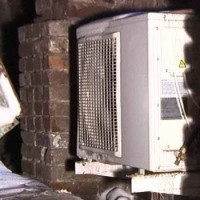 Installation of an external air conditioning unit in the attic: the possibility of solving and analysis of technical specifics
Installation of an external air conditioning unit in the attic: the possibility of solving and analysis of technical specifics 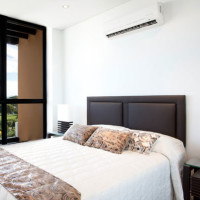 Where to get the air conditioning water drain: norms and options for the drainage system for a split system
Where to get the air conditioning water drain: norms and options for the drainage system for a split system 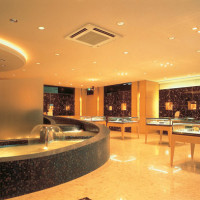 Installation of cassette air conditioners: technological rules for installing a household “cassette”
Installation of cassette air conditioners: technological rules for installing a household “cassette”  What to do if the split system flows into the room: common breakdowns and how to fix them
What to do if the split system flows into the room: common breakdowns and how to fix them 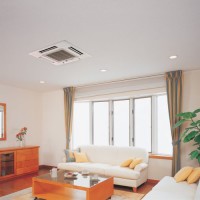 How to build an air conditioner route: communications device specifics
How to build an air conditioner route: communications device specifics 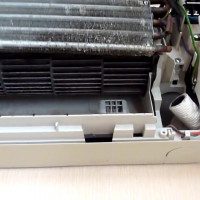 The device of the indoor unit split system: how to disassemble equipment for cleaning and repair
The device of the indoor unit split system: how to disassemble equipment for cleaning and repair  How much does it cost to connect gas to a private house: the price of organizing gas supply
How much does it cost to connect gas to a private house: the price of organizing gas supply  The best washing machines with dryer: model rating and customer tips
The best washing machines with dryer: model rating and customer tips  What is the color temperature of light and the nuances of choosing the temperature of the lamps to suit your needs
What is the color temperature of light and the nuances of choosing the temperature of the lamps to suit your needs  Replacement of a geyser in an apartment: replacement paperwork + basic norms and requirements
Replacement of a geyser in an apartment: replacement paperwork + basic norms and requirements